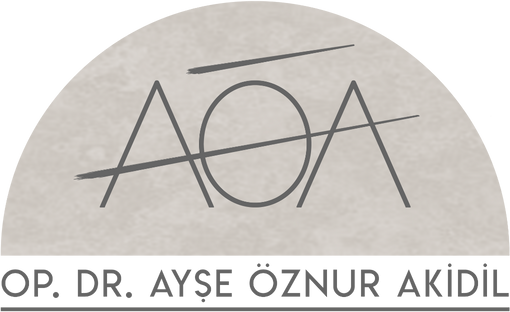Rhinoplasty is a surgical procedure performed for both aesthetic and functional reasons. For many, this operation not only enhances the appearance of the nose but also addresses breathing issues. However, rhinoplasty goes beyond altering physical appearance—it can impact personal confidence, quality of life, and overall health. In this article, we’ll cover all the essential details about the rhinoplasty process and provide a comprehensive guide to help you make an informed decision.
What Is Rhinoplasty?
Rhinoplasty, medically known as nasal surgery, is a procedure aimed at correcting the shape or function of the nose. It is performed for both aesthetic and functional purposes, aiming to improve individuals’ quality of life. Aesthetic rhinoplasty focuses on achieving a more attractive, proportionate, and natural appearance, while functional rhinoplasty addresses issues like nasal blockage, deviated septum, and other breathing problems. These two types are often combined.
Who Can Have Rhinoplasty?
Rhinoplasty is generally recommended for individuals aged 18 and older, as nasal development is typically complete by this age. For younger individuals, rhinoplasty is usually discouraged unless necessary for medical reasons, such as breathing difficulties or trauma.
Candidates for rhinoplasty should also be in good general health. Those with serious health issues like diabetes or heart disease may face increased risks. Beyond physical readiness, psychological preparedness is essential. For cosmetic procedures, having realistic expectations helps ensure a healthier recovery process.
The Rhinoplasty Process
Rhinoplasty involves more than just the surgical procedure itself. It is a multi-step process where each phase plays a crucial role. Here are the main steps:
1. Preparation and Consultation
Before surgery, you’ll have a detailed consultation with your plastic surgeon. During this meeting, your current nasal structure, facial features, any functional issues, and aesthetic goals will be assessed. The surgeon will determine the most suitable nasal shape for your facial structure. Functional problems, like deviations or blockages, will also be evaluated. This stage is critical, as the goal is to create both a visually pleasing appearance and a healthy breathing structure.
2. Anesthesia
Rhinoplasty is typically performed under general anesthesia, where the patient is completely asleep and feels no pain during the procedure. However, for minor cosmetic adjustments, local anesthesia may be an option. The choice of anesthesia depends on the surgeon’s recommendation.
3. Surgery
The surgery usually involves incisions made either externally on the nose or internally. For cosmetic changes, the surgeon may remove a nasal hump, reshape the tip, or reduce the size of the nose. Deviations inside the nose are corrected through a procedure called septoplasty. Functional rhinoplasty often focuses on opening nasal passages for improved airflow.
Rhinoplasty can be performed using open or closed techniques. Open rhinoplasty involves a small incision on the outside of the nose, while closed rhinoplasty is done through internal incisions. Both techniques yield successful outcomes when performed by skilled surgeons.
4. Recovery Process
Recovery varies from person to person. Swelling and bruising are common in the first few days, which is entirely normal. During this time, patients should rest, keeping their heads elevated while lying down. Pain is usually manageable with prescribed painkillers. Splints or bandages are typically removed after 7–10 days.
Full recovery may take several weeks, but it can take 6 months to a year for the final shape of the nose to become apparent as swelling subsides.
Advantages of Rhinoplasty
Rhinoplasty provides both aesthetic and functional benefits. Here are the main advantages:
- Aesthetic Improvement: Achieve a more harmonious appearance by aligning your nose with your facial features.
- Improved Breathing: Surgery can alleviate nasal blockages, septum deviations, and snoring, leading to easier breathing.
- Boosted Confidence: A well-shaped nose can enhance overall self-esteem and confidence.
- Resolution of Sinus Issues: Structural problems in the nose can reduce frequent sinus infections.
Risks of Rhinoplasty
Like all surgeries, rhinoplasty comes with certain risks, including:
- Infection: Although rare, following post-operative care instructions minimizes this risk.
- Bleeding: Post-operative bleeding may occur but is typically temporary.
- Allergic Reactions to Anesthesia: While rare, some individuals may experience allergic reactions.
- Unexpected Results: Dissatisfaction with results can be mitigated by choosing an experienced surgeon.
Post-Rhinoplasty Care
Proper post-operative care is essential for a smooth recovery. Key points include:
- Rest: Adequate rest, especially during the first few days, speeds up recovery. Keeping your head elevated reduces swelling.
- Cold Compresses: Applying cold compresses helps minimize swelling.
- Physical Activity: Avoid strenuous activities, including exercise and swimming, for 4–6 weeks.
- Sun Protection: Protect your nose from direct sunlight using sunscreen and avoiding sun exposure.
- Follow-Up Appointments: Regular check-ups ensure a smooth recovery process.
Final Thoughts
Rhinoplasty offers significant aesthetic and functional improvements, contributing to better health and confidence. Careful evaluation, choosing an experienced surgeon, and adhering to recovery guidelines are crucial for achieving optimal results. Remember, a harmonious nose not only enhances appearance but also elevates quality of life.




